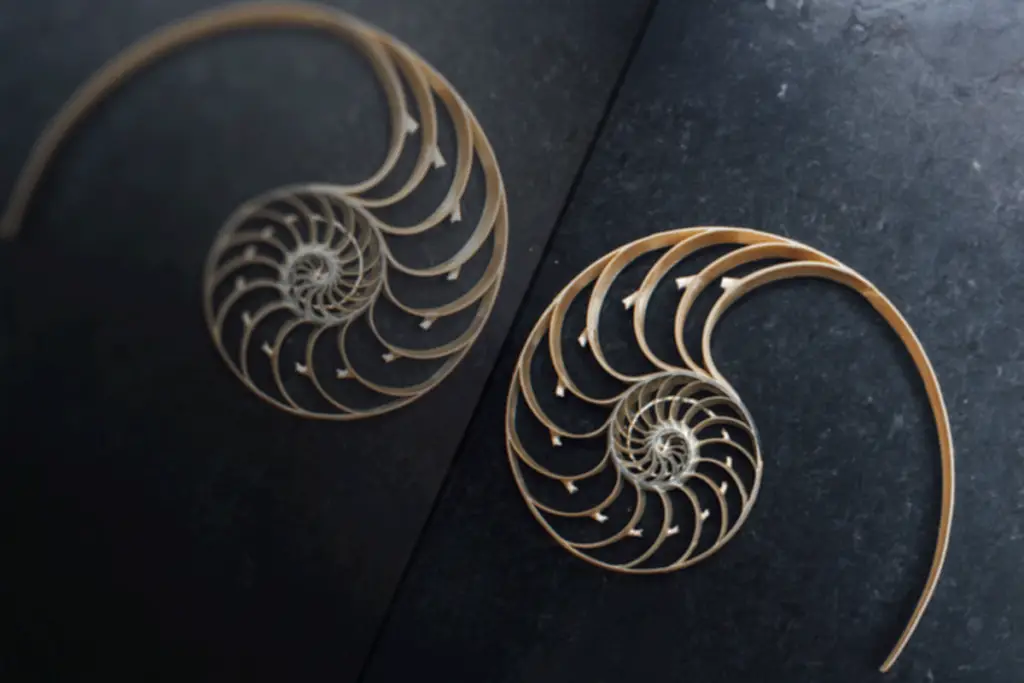It’s getting noisy out there.
Not the creative kind of noise—the friction that comes from ideas rubbing against one another until something new emerges. No, this is the other kind. A rising cacophony of fear, masked as authority. It’s whispered across faculty lounges, dropped into LinkedIn hot takes, written into op-eds with the cadence of resignation: “AI isn’t design.” “Designers are being replaced.” “Students don’t want to learn fundamentals anymore.” I’ve heard these refrains before. They’re not new. What’s new is the speed of the tools—and the speed at which we’re being asked to evolve alongside them, to accept the distasteful alongside possibility, and to equate the two. Here’s the hard truth: fear makes a terrible foundation for teaching. And a dangerous one for learning.
The Cacophony of Fear
When designers or educators say “AI can’t understand nuance,” what they often mean is I’m afraid I no longer know what’s expected of me. That’s a deeply human response. Change is hard, and not evenly distributed. It can be especially cruel to those who were once considered experts in an older mode of working. But let’s not confuse fear for rigor.
Too often, fear performs as gatekeeping. It shows up as disdain for Canva, contempt for templates, or outright hostility toward AI-generated iterations. Beneath the surface however, the pattern is familiar: a fear of being outpaced, outmoded, or simply misunderstood in a space that once felt like home—comfortable. This fear isn’t limited to students. I’ve encountered it in faculty meetings, conference panels, and design studios. And most often—from the very people whose careers were built on the tool revolutions of prior decades. Those who, consciously or not, benefited from the democratization of design—the rise of desktop publishing, the Adobe ecosystem, the shift to digital. The same shift that once elevated their roles now feels like a threat to it. That contradiction deserves more honesty than we’re usually willing to give.
The Vertical Curve Isn’t the Problem—It’s the Absence of Scaffolding
New designers aren’t “lazy” or “tool-obsessed,” they’re overwhelmed. Their learning curve is nearly vertical. What’s missing isn’t motivation—it’s structure. What’s missing is scaffolding.
We teach students how to operate tools, but not how to think with them. We drill features, not systems. We throw them into template-driven platforms and then mock them for being “style over substance,” all without showing them how to evaluate a workflow, decode a license, or future-proof a design. What they need isn’t nostalgia. It’s guidance, tempered with patience, and space to practice ethical discernment when the rules are changing faster than the textbooks or mentors can keep pace.
Facing the Ethical Complexity Head-On
Let’s be honest: some AI tools were trained on stolen work. Not all—but enough to warrant real concern. What if, instead of shutting down the conversation, we strive to open it up?
This isn’t our first reckoning with ethical ambiguity disguised as accessibility. It took years—decades, really—for people to understand that images pulled from the internet aren’t free. That fonts are licensed. That intellectual property includes the subtleties of creative labor. We taught those lessons once. We can teach them again. Just as we used to explain the difference between stock and original art, or between freeware and paid licenses, we now have a responsibility to teach the difference between ethically trained AI and exploitative models. This is not about shame. It’s about fluency.
Ethical tool adoption is not black and white—it’s a design problem. A systems-thinking problem. It invites inquiry:
- Who trained this model?
- On what data?
- With whose consent?
- To what end?
When we teach students to ask these questions, we’re not discouraging innovation. We’re encouraging integrity.
When Tools Reflect a World That Wasn’t Built for Everyone: The Chiral Spiral
Bias isn’t new either. It’s just quieter when we agree with it.
Photoshop’s struggles with accurately color-correcting darker skin tones weren’t just bugs—they were legacies. They were the traces of a deeper, systemic issue that began long before digital tools existed. Kodak’s film stock—engineered to capture and reproduce light skin tones accurately—was never calibrated for the full spectrum of human skin. The Shirley cards used to standardize color? All white. That bias baked itself into the imaging standards we still rely on today, it taught generations of designers to “correct” skin tones that were never flawed to begin with. It didn’t teach, correct skin tone to “life” rather than algorythms.
The same holds true for design language. What we call “clean,” “elegant,” or “professional” is often a stand-in for Western, minimal, white-adjacent aesthetics. Typography, grid systems, interface logic—these were all born in specific cultural contexts. But they were exported as universal truths. I’ve come to think of this as the chiral spiral of design—a logarithmic curve noted in molecular biology, with a specific handedness, where its mirror image cannot be superimposed on the original. Chirality in this context becomes a powerful lens for understanding bias, power, and inherited structures in design. In classic design terminology, many of us were taught the golden ratio, which is the geometric representation of the chiral logarithmic curve.
Our tools encode preferences that aren’t neutral—they spiral in a specific direction. Our language carries cultural orientation. Our education systems pass down workflows with dominant handedness—often without naming them as such. This spiral begins with a single point of contact—a stylus, a fingertip, an idea—and moves outward, but with increasing compression as technological change accelerates. Design education rarely acknowledges this chirality. It should.
We can’t dismantle bias if we can’t see it. We can’t reimagine the canon until we acknowledge how it was built and which way it spirals. The tools we use aren’t neutral—they encode preferences, priorities, and power structures. Our job is to help students visualize these spirals, interrogate their defaults, and—when needed—design in counter-spiral directions that untwist our shared visual language. It is not teaching visual code-switching.
Teaching for Perpetual Evolution: Design as Spiral, Not Ladder
Perhaps the most foundational skill we can impart isn’t mastery of current tools but cultivating students’ capacity to navigate constant change throughout their careers. This isn’t a new idea—adaptability has ensured human survival for millennia. What’s different now is the acceleration.
Design education stands at this critical intersection: we must prepare students for perpetual technological evolution while preserving the essential through-line of design principles that transcend specific tools. Without this balance, we risk creating practitioners who either cling to outdated methods or chase every new technology without discernment.
This is where the chiral spiral returns as a conceptual framework. Rather than depicting progress as linear or hierarchical—a ladder to climb—the spiral acknowledges iteration, reflection, and return. It allows us to see design education not as a steady march forward but as a recursive process that simultaneously moves outward while folding experience inward.
The through-line isn’t nostalgia—it’s the accumulated wisdom of design thinking that persists across technological transitions, spiraling through time, both backwards and forwards. It’s understanding that hierarchy, contrast, and rhythm matter regardless of whether you’re working in letterpress or augmented reality. It’s recognizing that user needs, ethical considerations, and contextual awareness remain constant even as the means of addressing them evolve.
When we focus solely on adaptability without nurturing this through-line, we produce designers who can operate new tools but not evaluate their impact. When we emphasize tradition without cultivating adaptability, we create practitioners whose skills become increasingly irrelevant.
The most valuable skill we can teach isn’t just how to use today’s tools, but how to recognize patterns across systems—to see how design challenges recur in new technological contexts and how to apply enduring principles to emerging problems. This pattern recognition becomes a form of professional resilience, allowing designers to navigate technological disruption without losing their foundation.
By teaching students to maintain this creative tension—between innovation and tradition, between experimentation and principles—we prepare them not just for the next tool revolution, but for a lifetime of meaningful adaptation. This is how the profession survives, not by resisting change, but by evolving thoughtfully, keeping the spiral’s through-line intact while embracing new possibilities.
Teaching Without the Fear
So, what would it look like to teach design without the fear?
It would look like showing students how to hold complexity, not flatten it. Teach people to see tools not as threats, but as systems. Teach people to weigh speed against adaptability, accessibility against authorship, and novelty against ethics. It would mean teaching non-destructive workflows not as a preference, but as a metaphor for how to work in an uncertain world: reversible, scalable, thoughtful. It would mean reminding ourselves that rigor doesn’t require rigidity. And that relevance isn’t something we defend—it’s something we renew.
Design education should not be an elegy for a past golden age. It should be a series of open doors. A set of questions. An invitation to participate with care in a field that is still becoming, as the chiral spiral rotates onward.
Let’s chose to teach that way.
The Full Series
-
The Missing Link in Design Education: Why Enterprise Fundamentals Still Matter
BLOG SERIES | 1 OF 7
The Missing Link in Design Education: Why Enterprise Fundamentals Still Matter -
Why It All Matters: The Cost of Cutting Corners on Design Thinking & Training
BLOG SERIES | 2 OF 7
Why It All Matters: The Cost of Cutting Corners on Design Thinking & Training -
Future-Proofing Your Work: Why Non-Destructive Workflows Matter More Than Ever
BLOG SERIES | 3 OF 7
Future-Proofing Your Work: Why Non-Destructive Workflows Matter More Than Ever -
The Myth of the Push-Button Designer: Why Expertise Still Matters
BLOG SERIES | 4 OF 7
The Myth of the Push-Button Designer: Why Expertise Still Matters -
Beyond the Pixel: Why Design Thinking and Collaboration Are Essential
BLOG SERIES | 5 OF 7
Beyond the Pixel: Why Design Thinking and Collaboration Are Essential -
Sustaining Creativity: How to Hold Onto Joy in a Broken Industry
BLOG SERIES | 6 OF 7
Sustaining Creativity: How to Hold Onto Joy in a Broken Industry -
When the Tools Evolve Faster Than We Do: Teaching Design Without the Fear
BLOG SERIES | 7 OF 7
When the Tools Evolve Faster Than We Do: Teaching Design Without the Fear


